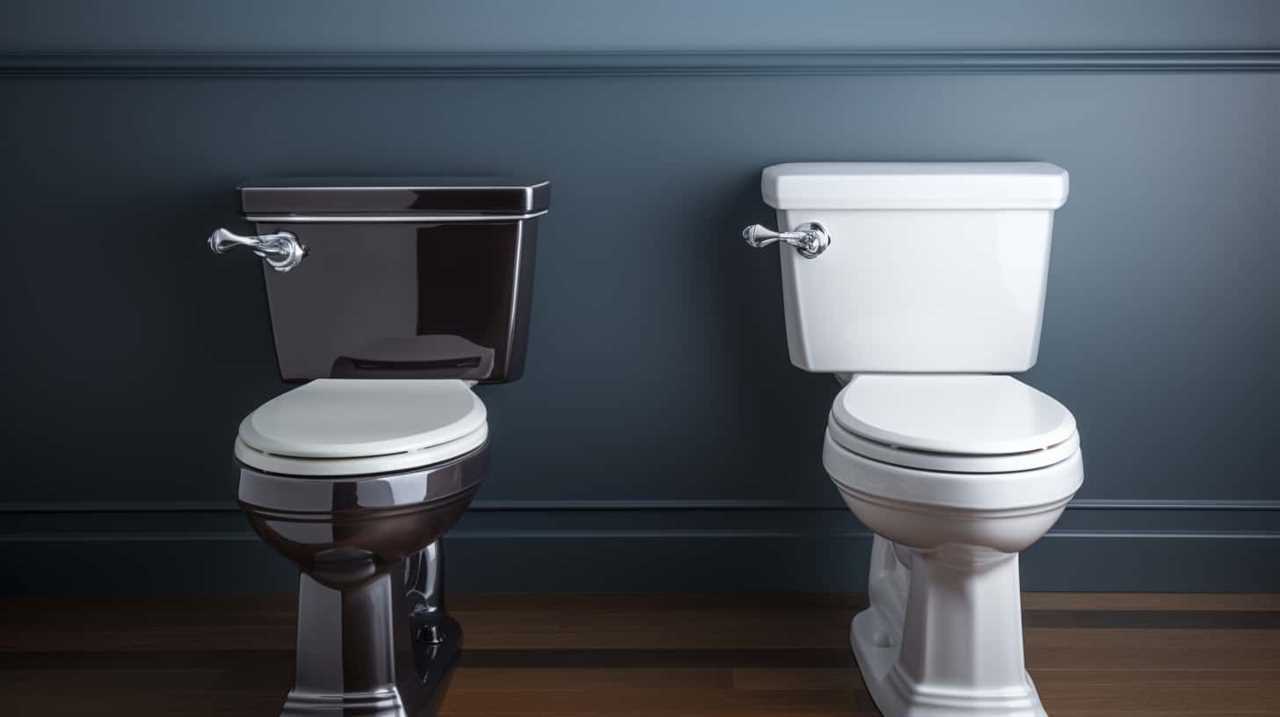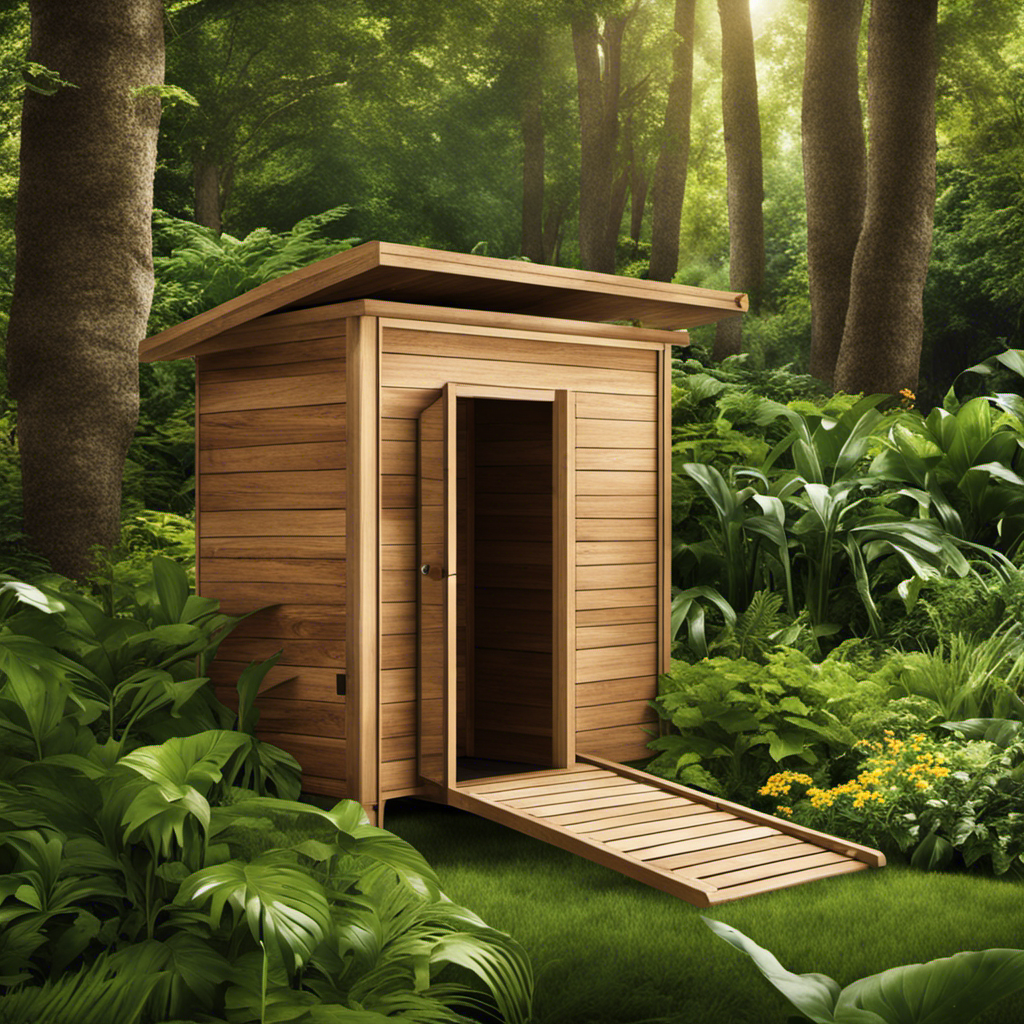Were you aware that approximately 20% of households have dealt with a stubbornly clogged toilet that refuses to unclog even with the use of a plunger? It can be quite frustrating, wouldn’t you agree?
Fortunately, we’ve got you covered with effective solutions to tackle this common issue. In this article, we will explore different techniques, such as using a toilet auger, homemade drain cleaner, hot water and dish soap, a wet/dry vacuum, or even calling a professional plumber.
Get ready to master the art of unclogging toilets when plungers fail!
Key Takeaways
- DIY methods for unclogging a toilet include plunging, using a toilet auger, pouring hot water and dish soap, and trying a baking soda and vinegar mixture.
- Indications that DIY methods are ineffective include a high water level, slow water drainage, gurgling sounds, failed attempts with the plunger, and persistent unpleasant odors.
- Reasons why a plunger doesn’t work include severe clog obstruction, a clog located further down the drain, damaged or faulty toilet components, incorrect plunging technique, and inadequate suction power.
- Professional plumbing solutions include video camera inspection of the drain, hydro jetting to remove stubborn clogs, using a toilet auger with higher power and reach, repairing or replacing damaged toilet components, and expertise in identifying underlying plumbing issues.
Use a Toilet Auger
To unclog a toilet when a plunger doesn’t work, we can use a toilet auger by inserting it into the toilet bowl. A toilet auger, also known as a plumbing snake, is a tool used to break up and remove stubborn clogs in the toilet drain. It consists of a long, flexible cable with a coiled end and a handle for turning.
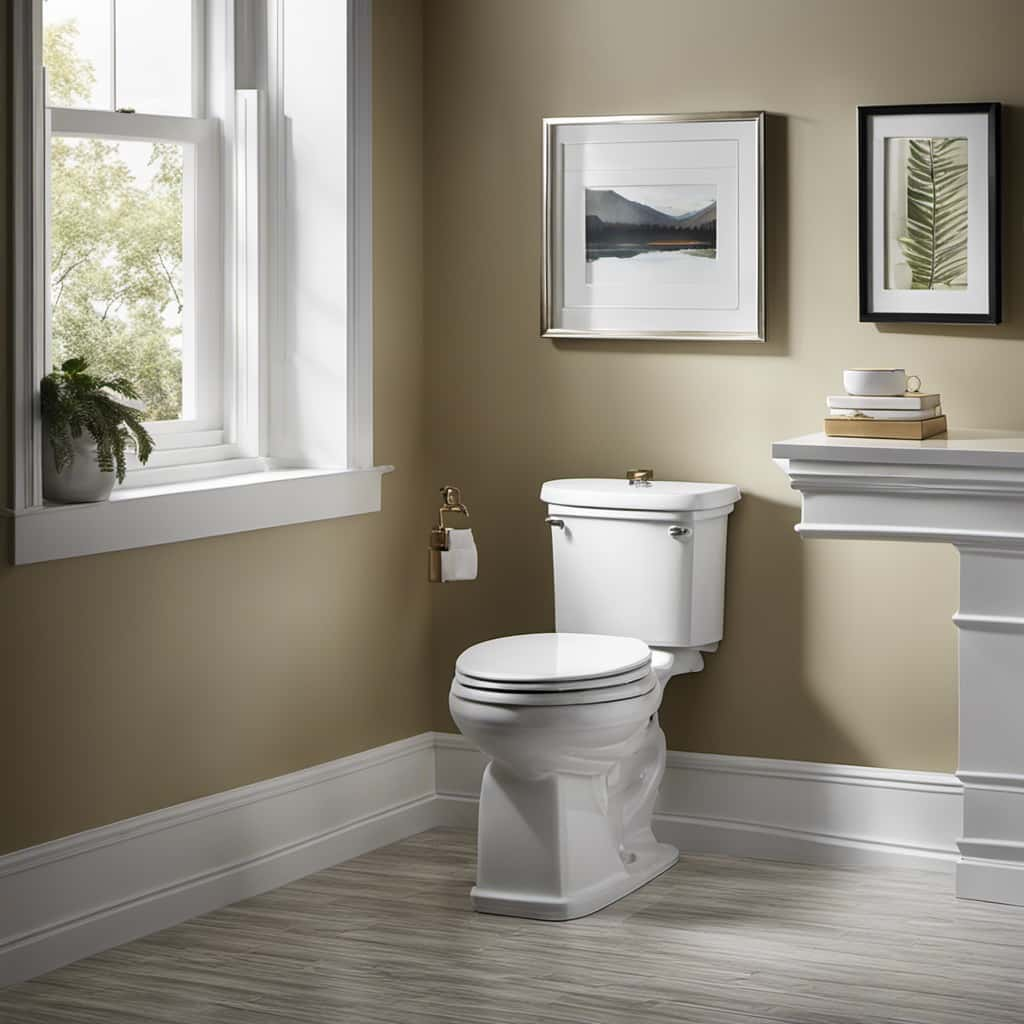
To use a toilet auger, we first insert the coiled end into the toilet bowl, making sure it goes past the trap. Then, we turn the handle clockwise to drive the cable deeper into the drain and break up the clog. Once the clog is cleared, we can flush the toilet to ensure proper drainage. Toilet augers are effective alternatives to plungers, especially for more challenging clogs.
To prevent toilet clogs in the first place, there are several measures we can take. First, we should avoid flushing anything other than toilet paper and human waste down the toilet. Items like baby wipes, feminine hygiene products, and paper towels can easily clog the toilet. Additionally, we should ensure that the toilet bowl isn’t overloaded with too much toilet paper, as this can lead to clogs.
Regular maintenance is also important, such as periodically cleaning the toilet bowl and drain to prevent buildup. Finally, if there’s a history of recurring clogs, it may be necessary to consult a professional plumber to identify and address any underlying issues with the plumbing system.
Try a Homemade Drain Cleaner
We can attempt to unclog a toilet when a plunger doesn’t work by using a homemade drain cleaner.

Natural remedies can be effective alternatives to chemical drain cleaners, which may contain harsh ingredients that can be harmful to the environment and your plumbing system.
One option is to create a mixture of baking soda and vinegar. Start by pouring half a cup of baking soda into the toilet bowl, followed by one cup of vinegar.
Let the mixture sit for about 30 minutes to allow the fizzing action to break down the clog.
Afterward, flush the toilet to see if the clog has cleared.

Remember to use caution when handling the homemade drain cleaner and to always follow proper safety guidelines.
Apply Hot Water and Dish Soap
For this method, you’ll need to gather hot water and dish soap to help unclog the toilet when a plunger doesn’t work. Here is a step-by-step guide on how to apply hot water and dish soap to unclog your toilet effectively:
- Start by heating a large pot of water on the stove until it’s hot but not boiling.
- Pour about half a cup of dish soap into the toilet bowl. Choose a dish soap that has degreasing properties.
- Carefully pour the hot water into the toilet bowl from a height of about waist level. Be cautious not to splash or overflow the bowl.
- Let the mixture of hot water and dish soap sit in the toilet bowl for at least 15 minutes. This will allow the soap to break down the clog and lubricate the pipes.
Now that we’ve covered the hot water and dish soap method, let’s move on to the next technique: utilizing a wet/dry vacuum.
Utilize a Wet/Dry Vacuum
After applying hot water and dish soap to the toilet bowl, our next option to unclog a toilet when a plunger doesn’t work is to utilize a wet/dry vacuum.
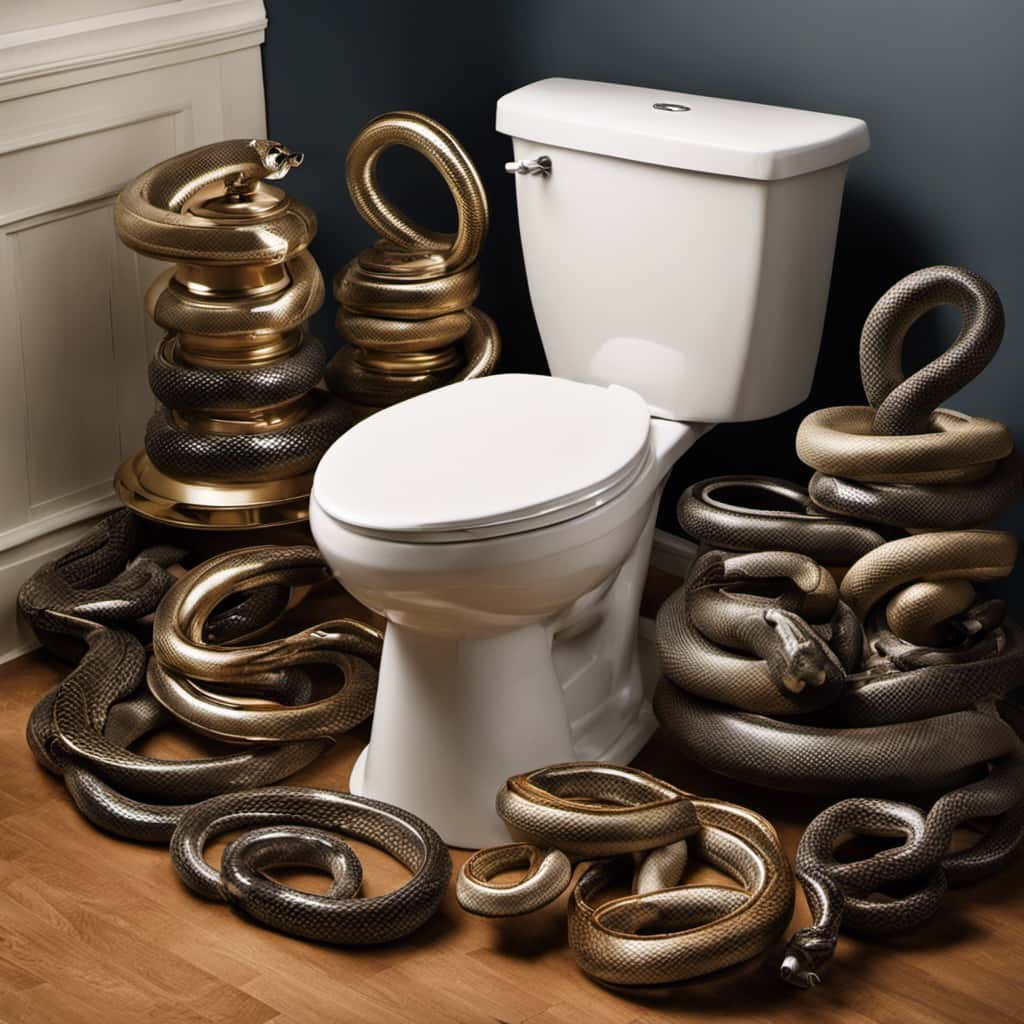
Using a plunger effectively is the first step, but if that doesn’t solve the problem, a wet/dry vacuum can be a powerful alternative. This method works by creating a strong suction to remove the blockage from the toilet drain.
To begin, ensure that the vacuum is set to the wet mode and insert the hose into the toilet bowl, making sure it’s securely in place. Turn on the vacuum and allow it to create suction, gradually pulling up to dislodge the clog. Be cautious not to let the vacuum touch the water to prevent any damage.
This method is effective for minor clogs but may not work for more severe blockages.
Call a Professional Plumber
If a plunger fails to unclog a toilet, it may be necessary to call in a professional plumber. While there are several DIY toilet unclogging techniques, sometimes the clog is too severe or complex for these methods to be effective. Hiring a plumbing service can provide the expertise needed to tackle the most stubborn clogs.
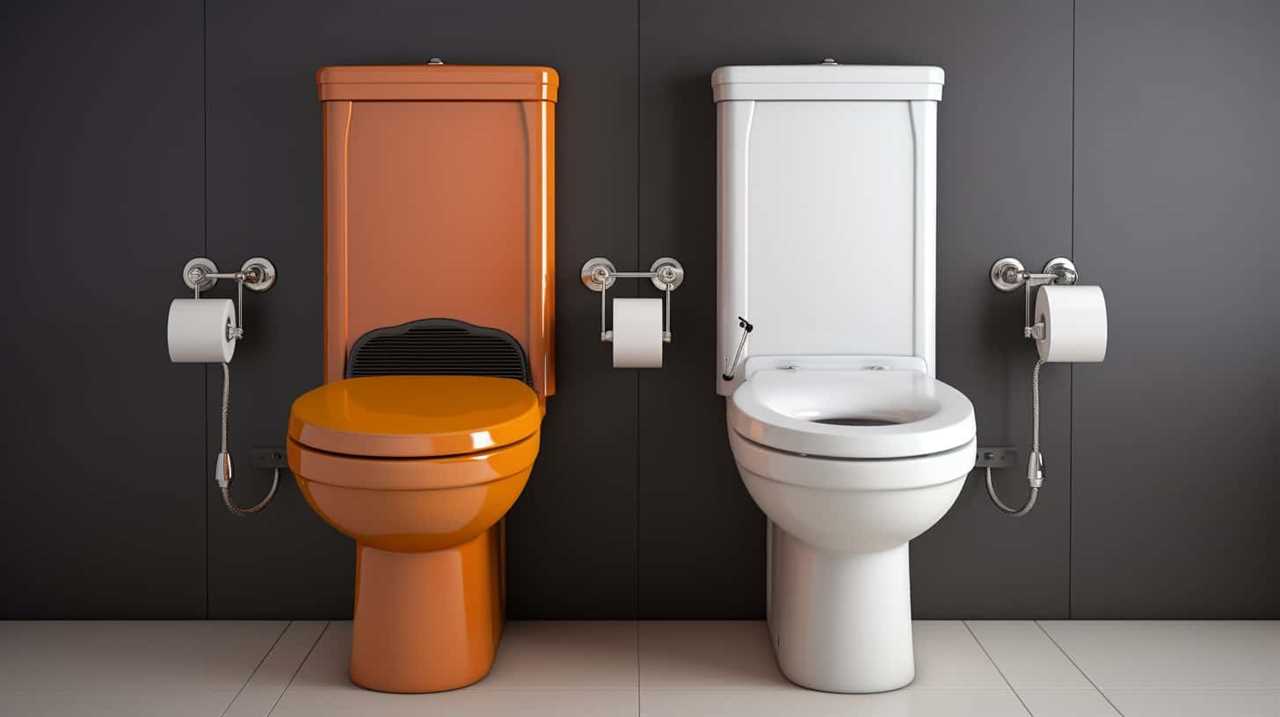
Here are four reasons why it’s worth considering calling a professional plumber:
- Specialized Tools: Plumbers have access to a wide range of specialized tools that can effectively remove even the toughest clogs without causing damage to the toilet or plumbing system.
- Professional Knowledge: Plumbers possess in-depth knowledge of toilet systems and can quickly diagnose the root cause of the clog, ensuring the right solution is implemented.
- Prevent Further Damage: Attempting to unclog a toilet without the necessary skills or tools can potentially cause damage to the toilet or plumbing system, leading to costly repairs.
- Time and Convenience: Calling a professional plumber saves you time and hassle, allowing you to focus on other important tasks while the experts handle the problem efficiently.
When DIY methods fail, don’t hesitate to hire a professional plumber who can resolve the issue effectively and prevent future problems.
Frequently Asked Questions
Can I Use a Toilet Auger on a Clogged Sink or Bathtub Drain?
Yes, a toilet auger can be used on a clogged sink or bathtub drain. However, using it on these drains may cause damage due to the different shapes and sizes of the pipes.
Is It Safe to Mix Hot Water and Dish Soap With a Homemade Drain Cleaner?
Using hot water and dish soap as a safe alternative to chemical drain cleaners is effective. Additionally, the combination of baking soda and vinegar can also be used as a homemade drain cleaner.

Can a Wet/Dry Vacuum Also Be Used to Unclog Other Household Drains?
Using a wet/dry vacuum for unclogging household drains is possible, but it might not be effective for all situations. To unclog drains, we recommend using baking soda and vinegar or considering the pros and cons of chemical drain cleaners.
Are There Any Risks or Potential Damage Associated With Using a Toilet Auger?
When using a toilet auger, it’s important to be aware of the risks associated and the potential damage it can cause. Careful handling and following proper instructions are essential to prevent accidents and maintain the integrity of your toilet.
How Much Does It Typically Cost to Hire a Professional Plumber for Unclogging a Toilet?
When a plunger doesn’t work, hiring a professional plumber to unclog a toilet can cost anywhere from $150 to $500, depending on the complexity of the job. DIY methods may be more cost-effective.
Conclusion
To conclude, when a plunger fails to unclog a toilet, there are several effective alternatives to try.
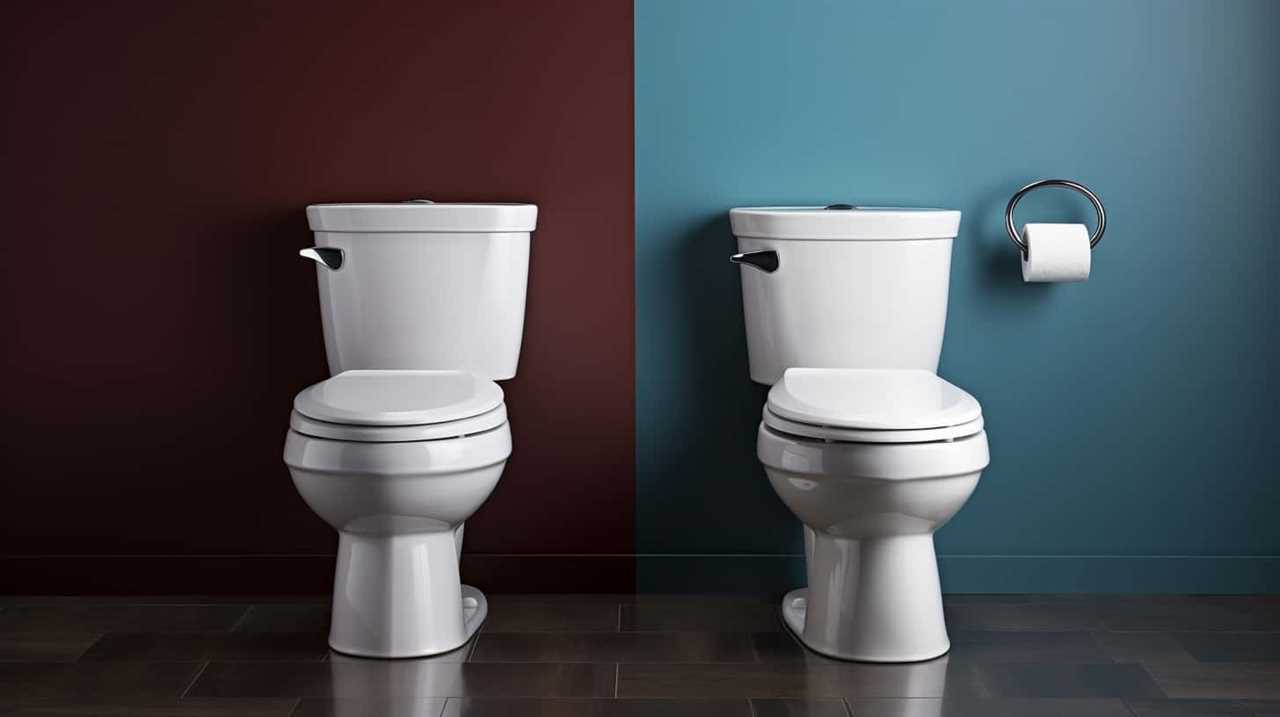
Using a toilet auger or a homemade drain cleaner can often solve the problem.
Applying a combination of hot water and dish soap may also help.
In more stubborn cases, utilizing a wet/dry vacuum can do the trick.
However, if all else fails, it’s advisable to call a professional plumber.

Remember, when faced with a clogged toilet, there are always solutions available.
So why wait?

